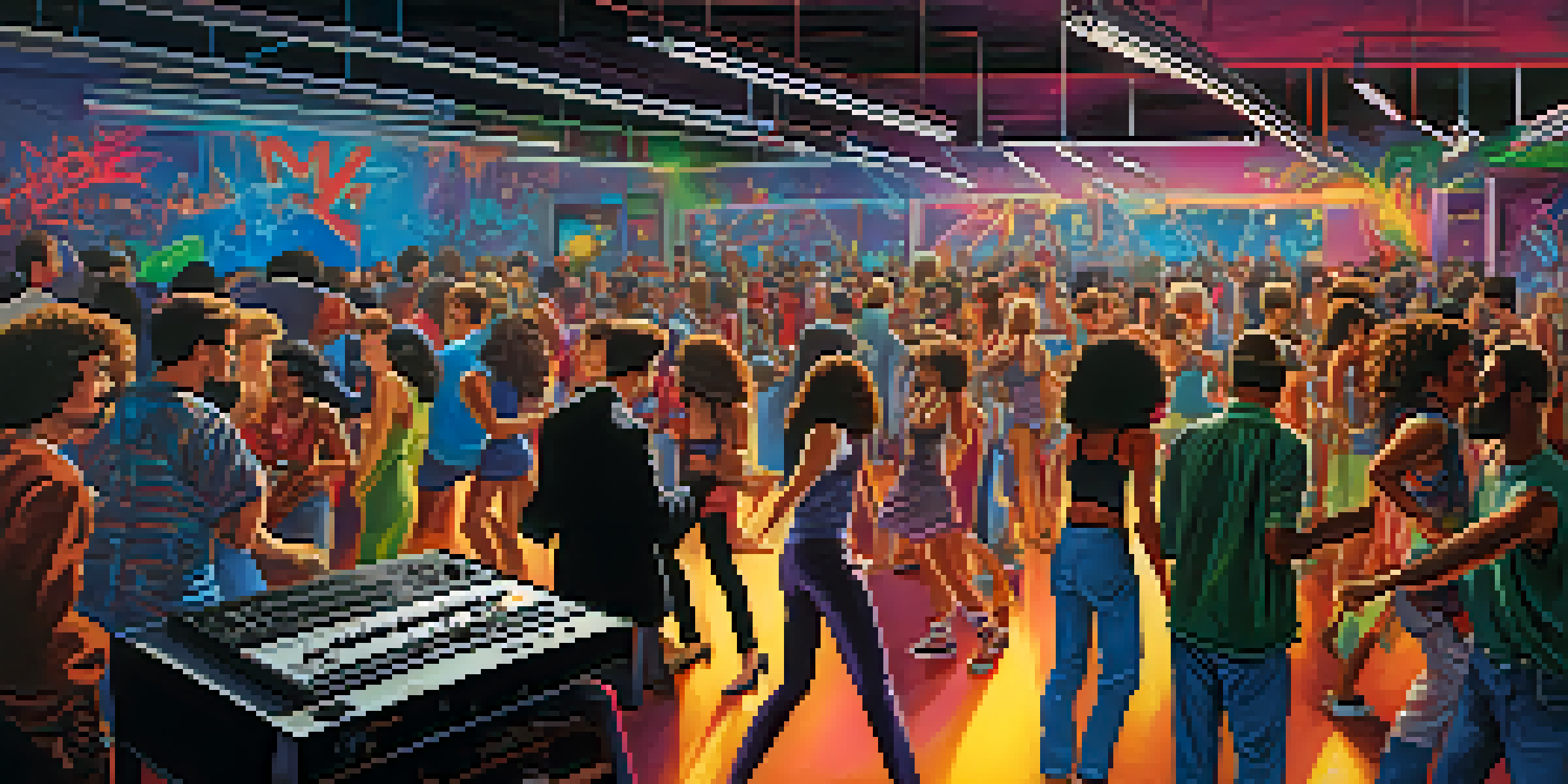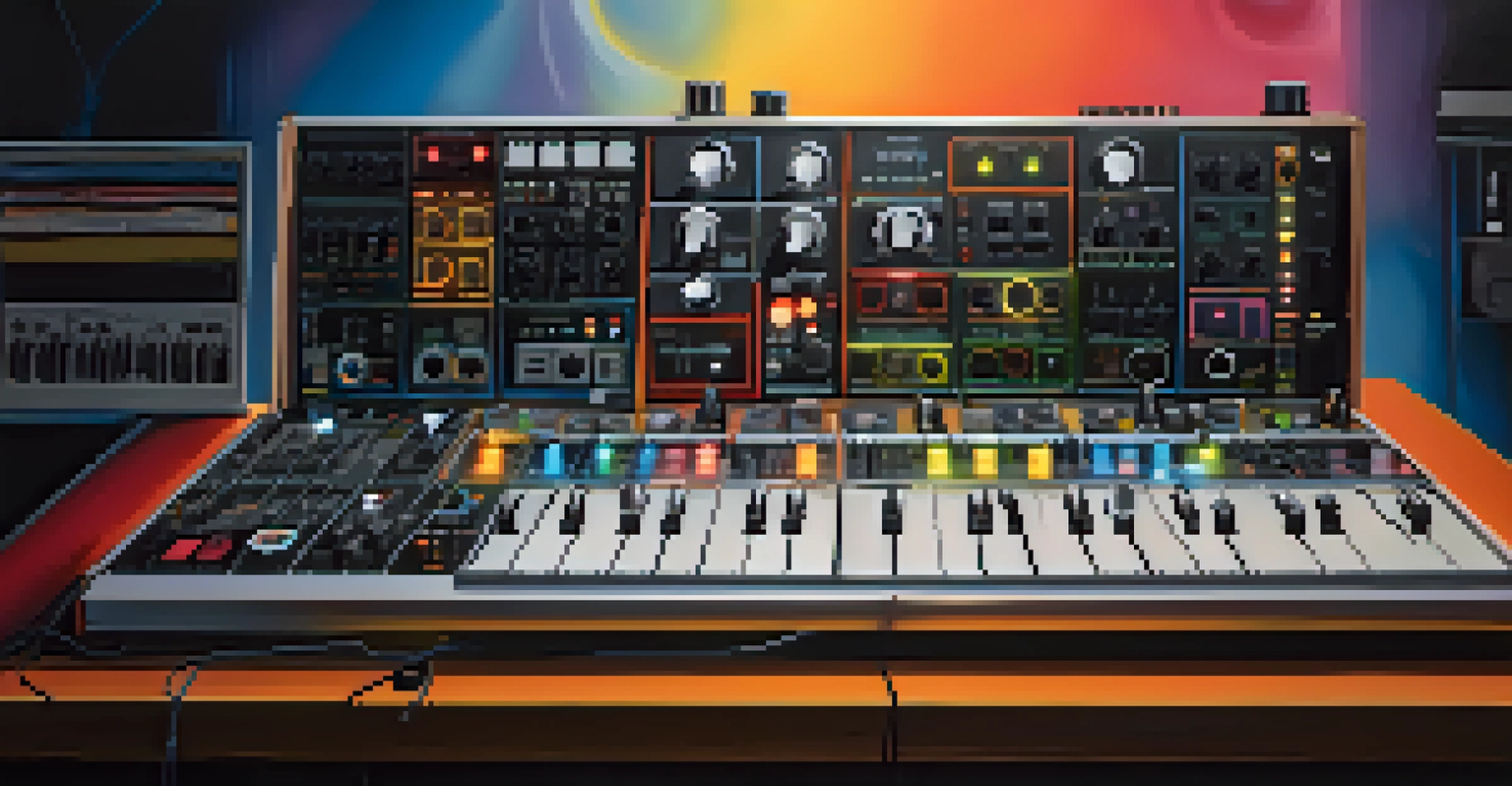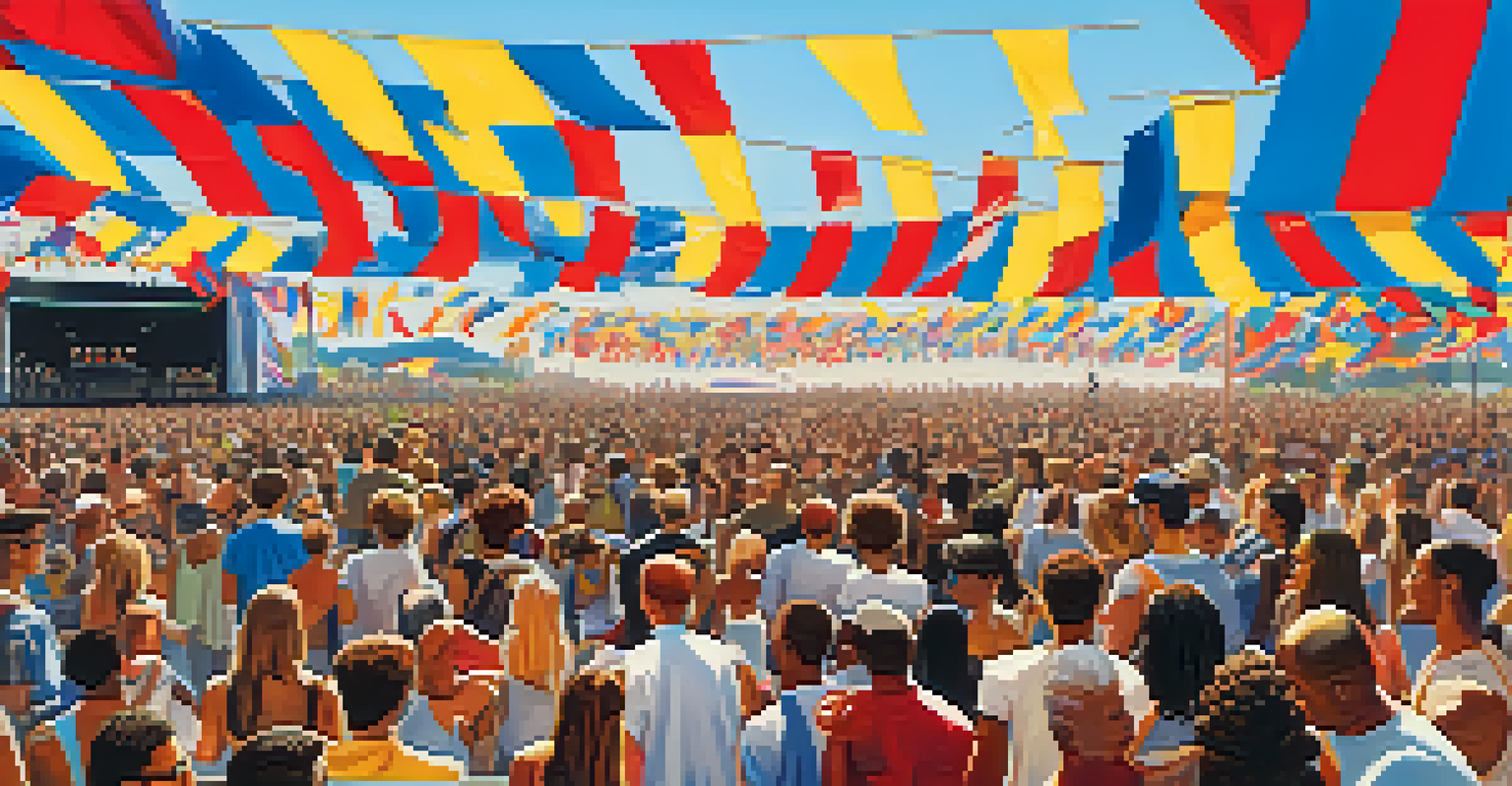Techno Origins: Detroit's Role in Shaping Electronic Music

The Birth of Techno: Detroit's Musical Landscape in the 1980s
In the early 1980s, Detroit was a city in transformation, marked by economic challenges but rich in musical innovation. This era saw a resurgence of creativity, with local artists experimenting with new sounds that combined elements of funk, soul, and electronic music. This melting pot of influences laid the groundwork for the emergence of techno, a genre that would soon captivate audiences worldwide.
Techno is a way of life, and the music is the heartbeat of a culture that embraces freedom and creativity.
Pioneering artists like Juan Atkins, Derrick May, and Kevin Saunderson began to explore the intersection of technology and music. They utilized synthesizers and drum machines, which were relatively new tools at the time, to create rhythmic, futuristic tracks. Their dedication to innovation not only defined the sound of Detroit but also set the stage for the global techno movement.
As these artists honed their craft, they began to host underground parties and events, creating a vibrant nightlife scene. These gatherings became a breeding ground for the genre, allowing fans and musicians alike to experience the raw energy of techno firsthand. This grassroots approach was instrumental in establishing Detroit as the birthplace of techno music.
Key Pioneers: The Faces Behind Detroit Techno
Juan Atkins, often referred to as the 'Godfather of Techno,' played a crucial role in shaping the genre's sound. His project, Model 500, combined elements of electro and house, paving the way for what would become known as Detroit techno. His innovative approach to music production inspired countless other artists and helped put Detroit on the map as a center for electronic music.

Derrick May, another key figure, introduced a more emotional and melodic style to techno with his classic track 'Strings of Life.' His ability to blend complex rhythms with lush melodies showcased the genre's versatility and depth. May's work not only resonated with Detroit's music scene but also reached international audiences, further solidifying the city's influence in electronic music.
Techno's Roots in Detroit's Scene
Detroit's vibrant music scene in the 1980s laid the foundation for techno, blending funk, soul, and electronic influences.
Kevin Saunderson, the third of the 'Belleville Three,' brought a unique flair to techno with his iconic track 'Big Fun.' His focus on creating uplifting, danceable music made techno accessible to a broader audience. Together, these pioneers laid the foundation for the genre while inspiring a generation of artists to push creative boundaries.
The Role of Technology in Shaping Techno Music
Technology has always been at the heart of techno music, influencing its sound and production techniques. Early electronic instruments, like the Roland TR-808 drum machine and the TB-303 bass synthesizer, became essential tools for producers in Detroit. These machines allowed artists to create crisp beats and deep basslines that defined the genre.
Detroit techno is the sound of a city reborn, a sonic expression of resilience and innovation.
As technology advanced, so did the methods of music creation. The rise of digital audio workstations (DAWs) and software synthesizers opened up new possibilities for experimentation in sound design. Artists began to explore a wider range of sonic textures and styles, ensuring that techno continued to evolve and innovate.
Moreover, technology facilitated the distribution of techno music beyond Detroit. With the advent of the internet and digital platforms, artists could share their music globally, reaching new audiences and inspiring local scenes in cities worldwide. This connection between technology and music has been vital in sustaining the genre's growth and relevance.
The Impact of Detroit Techno on Global Music Scenes
Detroit's influence on techno music has reverberated across the globe, inspiring countless artists and scenes in cities like Berlin, London, and Tokyo. The raw energy and innovative spirit of Detroit techno have translated into unique local interpretations, each adding its flair to the genre. This cross-pollination of ideas has led to a rich tapestry of electronic music worldwide.
For instance, Berlin's techno scene is heavily influenced by Detroit's sound, but it has developed its distinct character through its own cultural context. The legendary Berghain club, known for its marathon parties, embodies the spirit of techno that originated in Detroit while infusing it with a European aesthetic. This fusion has solidified Berlin's status as a global techno capital.
Key Figures Shaping Techno's Sound
Pioneering artists like Juan Atkins, Derrick May, and Kevin Saunderson defined Detroit techno, inspiring a global movement.
Additionally, the rise of festivals and events dedicated to techno music has further showcased Detroit's legacy. Events like Movement Festival in Detroit pay homage to the city's contributions while attracting fans and artists from around the world. This not only celebrates the genre's origins but also emphasizes its ongoing evolution and relevance in contemporary music.
The Evolution of Techno: From Underground to Mainstream
As techno gained popularity in the 1990s, it began to shift from underground clubs to mainstream recognition. This transition was marked by the emergence of various subgenres, including minimal techno, tech-house, and hard techno, each appealing to different audiences. This diversification allowed techno to reach new listeners while maintaining its core identity rooted in Detroit's sound.
Major music festivals and events played a significant role in this evolution, bringing techno to larger audiences. Festivals like Tomorrowland and Ultra Music Festival showcased not only established artists but also up-and-coming talent, bridging the gap between underground and mainstream. This exposure helped to further legitimize techno as a prominent genre in the electronic music scene.
However, this shift also sparked debates within the community about the commercialization of the genre. Some purists argued that the essence of techno was being diluted in the mainstream landscape. Yet, many artists embraced this change, recognizing the opportunity to reach wider audiences while still paying homage to their roots in Detroit.
Cultural Significance: Techno as a Movement
Techno music is more than just a genre; it represents a cultural movement that embodies freedom, creativity, and community. In Detroit, techno became a voice for the marginalized, providing an outlet for expression amidst the city's struggles. This sense of unity fostered a vibrant community, where people from diverse backgrounds came together on the dance floor.
The ethos of techno—promoting inclusivity and self-expression—has resonated with fans worldwide. Events and festivals often emphasize these values, creating spaces where people can connect and celebrate their shared love for music. This cultural significance has helped techno endure as a powerful force in the music industry.
Techno's Global Cultural Impact
The influence of Detroit techno has spread worldwide, inspiring unique local scenes and fostering a sense of community through music.
Moreover, the influence of techno extends beyond music; it has inspired fashion, art, and even social movements. The visual aesthetics associated with techno culture often reflect its roots in technology and futurism, creating a unique identity. As a result, techno continues to evolve, shaping not only the music landscape but also broader cultural conversations.
Looking Ahead: The Future of Techno Music
As we look to the future, the evolution of techno music seems limitless. With advancements in technology, artists are continually discovering new ways to create and share their music. This ongoing innovation ensures that techno will remain relevant and exciting for years to come.
Moreover, the global community surrounding techno continues to grow, with new scenes emerging in various cities around the world. This diversification enriches the genre, introducing fresh perspectives and sounds that keep it dynamic. As artists collaborate across borders, the genre is likely to experience even more exciting developments.

In essence, while Detroit may be the birthplace of techno, its spirit lives on through the creativity of artists worldwide. As the genre continues to evolve, it will undoubtedly remain a powerful force in shaping the future of music, embodying the very essence of innovation and community that defines its origins.